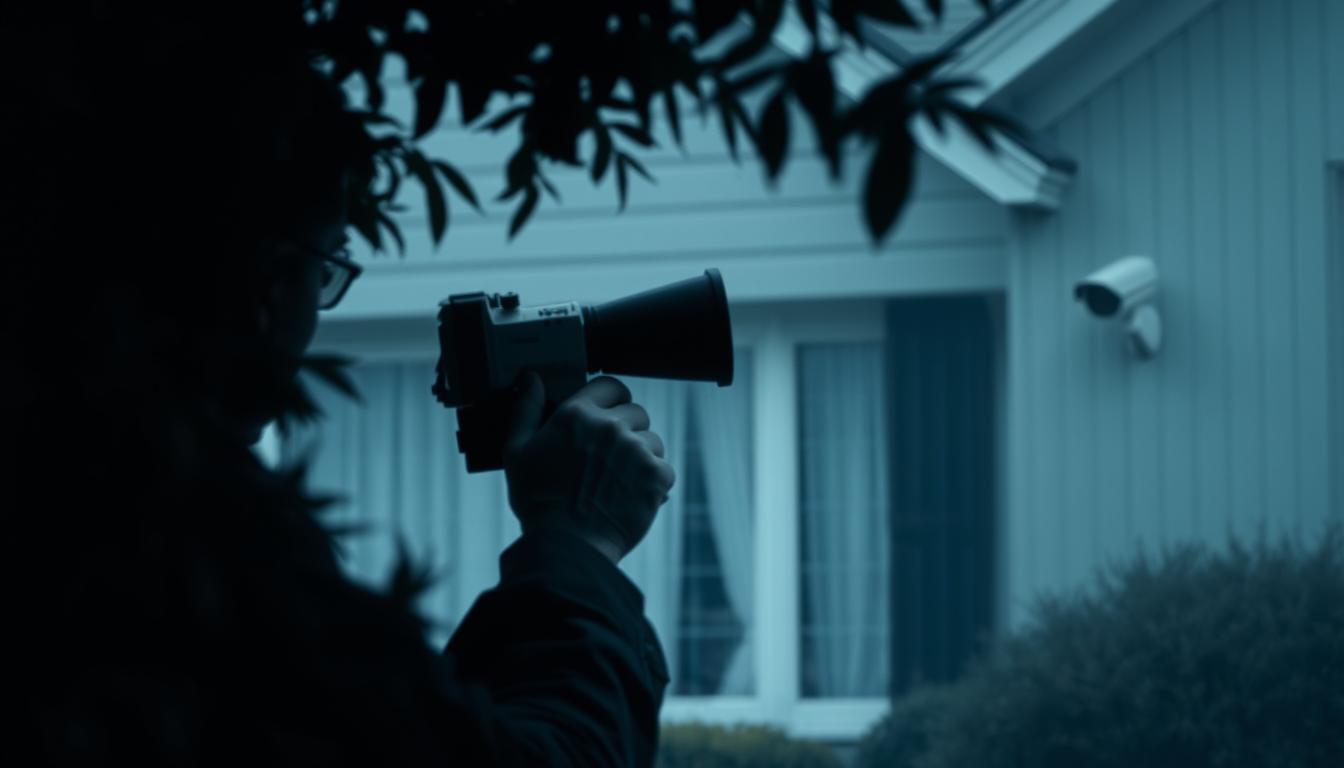Filing an insurance claim can be a stressful experience, and the thought of being under surveillance can add to the anxiety. Insurance companies use surveillance to verify the legitimacy of claims and potentially reduce payouts.
As a claimant, it’s natural to wonder when and if you’ll be watched. Understanding the tactics used by insurance companies can help you navigate your claim more effectively and maintain your credibility.
Key Takeaways
- Insurance surveillance is a common practice used to verify claim legitimacy.
- Surveillance can begin at any point during the claims process.
- Claimants have rights and should be aware of their privacy protections.
- Being informed is key to navigating insurance surveillance effectively.
- Understanding surveillance methods can help claimants prepare and maintain credibility.
Understanding Insurance Surveillance
Understanding the concept of insurance surveillance is essential for claimants to navigate the claims process effectively. Insurance surveillance refers to the methods used by insurers to monitor and investigate claimants to verify the legitimacy of their claims.
What Constitutes Insurance Surveillance
Insurance surveillance encompasses various techniques, including physical surveillance, social media monitoring, and the collection of video and photographic evidence. Surveillance activities are often conducted to detect fraudulent claims or to verify the extent of injuries claimed. It’s crucial for claimants to be aware that their actions, both online and offline, may be monitored during the claims process.
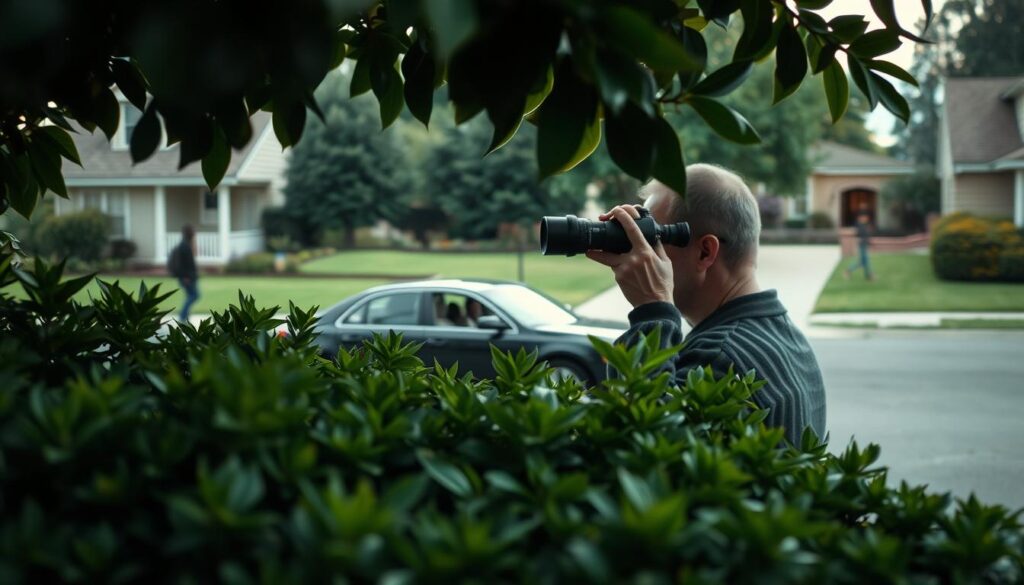
Legal Basis for Surveillance Activities
The legal basis for insurance surveillance is rooted in the balance between an insurer’s right to investigate claims and a claimant’s right to privacy. Provincial privacy law legislation plays a significant role in limiting surveillance based on its intrusiveness. For instance, surveillance in private spaces like homes is generally restricted, while surveillance in public spaces is more permissible. Understanding these rights and limitations is vital for both insurers and claimants.
Claimants should be aware of their rights regarding surveillance to ensure they are treated fairly. The laws governing surveillance vary by jurisdiction, and understanding these variations is crucial for navigating the claims process effectively.
When Do Insurance Companies Start Surveillance
The decision to initiate surveillance is typically based on specific triggers that suggest potential inconsistencies in a claim. Insurance companies conduct surveillance to verify the legitimacy of claims and prevent fraudulent activities.
Early Claim Investigation Triggers
Insurance companies often start surveillance early in the claim investigation process if they identify red flags. Red flags may include inconsistencies in the claimant’s statement or suspicious behavior during initial interactions.
Before Key Events in Your Case
Surveillance may be conducted before key events in a case, such as a medical examination or a court hearing, to gather evidence that could impact the outcome. Claimants should be aware of their behavior throughout the claims process, as it may be monitored.
After Suspicious Activity or Reports
If suspicious activity is reported or observed, insurance companies may initiate surveillance to investigate further. This can include monitoring social media activity that suggests activities inconsistent with reported injuries. 
Anonymous reports from neighbors, coworkers, or acquaintances can also prompt insurance companies to begin monitoring a claimant. It’s essential for claimants to maintain consistent behavior throughout the claims process to avoid raising suspicions.
Common Surveillance Methods Used by Insurers
Insurance companies employ various surveillance methods to investigate claims. These methods help insurers verify the legitimacy of claims and make informed decisions.
Physical Surveillance Techniques
Physical surveillance involves direct observation of claimants. Investigators may follow claimants, observe their daily activities, and note their physical capabilities. This type of surveillance can be conducted discreetly, often using advanced technology to remain unnoticed.
Social Media Monitoring
Insurers also monitor claimants’ social media activities. Posts, photos, and videos on platforms like Facebook, Twitter, and Instagram can provide valuable information about a claimant’s condition and activities. This information can be used as evidence to support or contradict a claim.
Video and Photographic Evidence
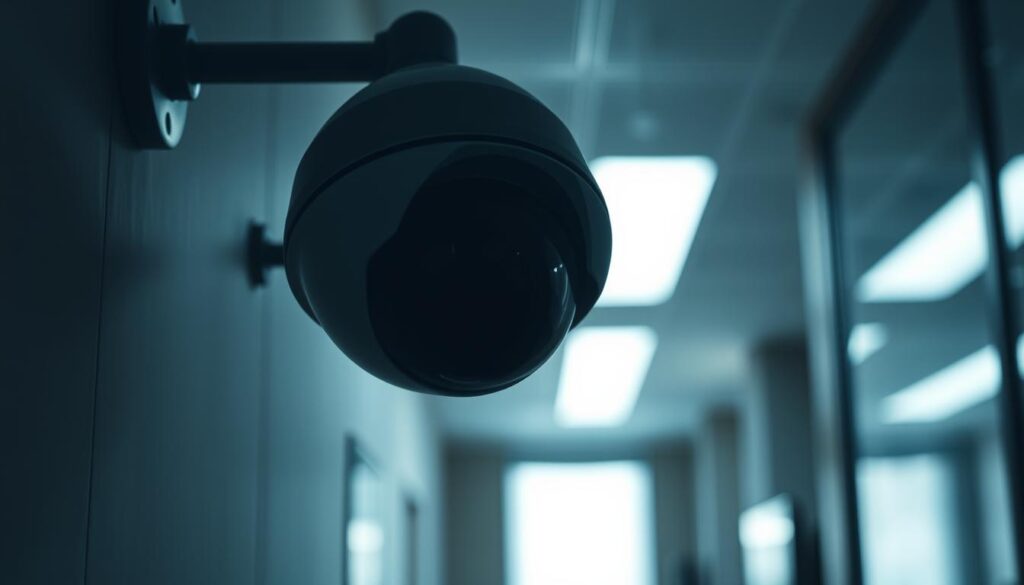 video surveillance has become a primary tool for insurance investigations. It offers compelling visual evidence that can significantly impact claims. Various recording methods are used, including handheld cameras, dashboard cameras, and drones. Continuous video footage is particularly valuable as it shows the complete range and duration of activities.
video surveillance has become a primary tool for insurance investigations. It offers compelling visual evidence that can significantly impact claims. Various recording methods are used, including handheld cameras, dashboard cameras, and drones. Continuous video footage is particularly valuable as it shows the complete range and duration of activities.
Why Insurance Companies Conduct Surveillance
Insurance companies employ surveillance to achieve two main objectives: verifying claim legitimacy and gathering evidence. This dual purpose is crucial in their assessment and handling of claims.
Verifying Claim Legitimacy
Insurance companies conduct surveillance to verify the legitimacy of claims. By doing so, they aim to ensure that the claimant’s reported injuries or circumstances align with their actual condition. Surveillance helps insurers identify potential discrepancies that may indicate fraudulent activity.
For instance, if a claimant alleges a severe injury that prevents them from performing certain activities, surveillance footage showing them engaging in those very activities can be a powerful tool for insurers. As noted by a legal expert, “Surveillance can reveal inconsistencies in a claimant’s story, which can be crucial in determining the legitimacy of a claim.”
Gathering Evidence to Reduce Payouts
Another key reason insurance companies gather evidence through surveillance is to reduce potential payouts. By capturing evidence that contradicts a claimant’s alleged limitations or injuries, insurers can negotiate lower settlements or even deny benefits entirely.
| Surveillance Method | Purpose | Potential Impact |
|---|---|---|
| Physical Surveillance | Monitor claimant’s daily activities | Reveal inconsistencies in claimed injuries |
| Social Media Monitoring | Track online activity and posts | Identify contradictory statements or actions |
| Video and Photographic Evidence | Capture visual proof of claimant’s activities | Provide concrete evidence to challenge claims |
It’s essential for claimants to be aware that their actions, both online and offline, can be used against them. As such, understanding how insurance companies conduct surveillance can help claimants navigate the process more effectively.
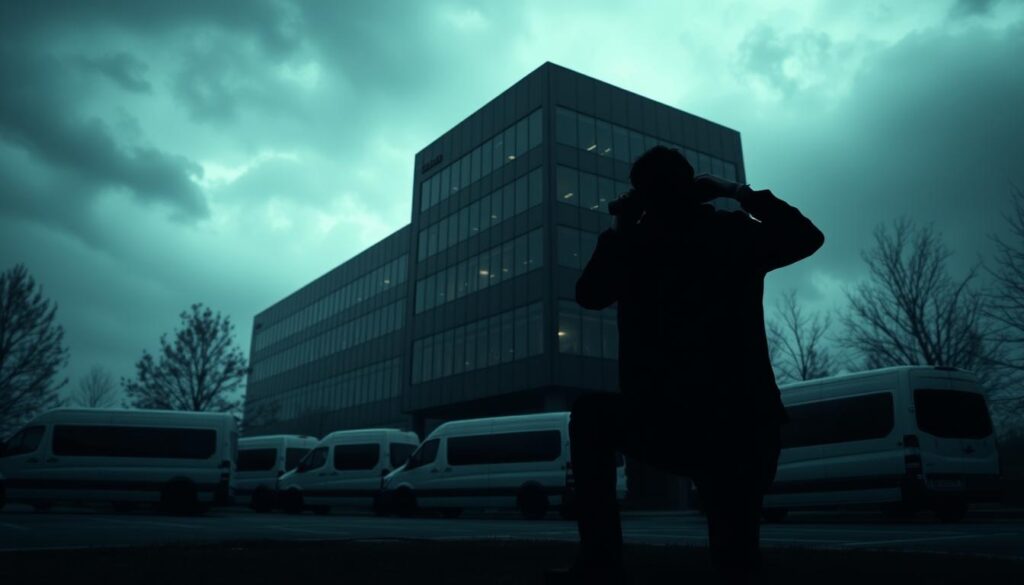
How Surveillance Can Impact Your Claim
Surveillance evidence can be a crucial factor in determining the legitimacy of a personal injury claim. Insurance companies often use surveillance to verify the authenticity of injury claims, which can have a substantial impact on the claimant’s case.
Evidence Taken Out of Context
Surveillance evidence, such as videos or photographs, can be taken out of context, potentially misrepresenting a claimant’s actual condition. For instance, a person might be captured on camera performing an activity on a “good day,” which doesn’t reflect their usual state of pain and discomfort.
As seen in the case of Mr. Rajic,
“Although Mr. Rajic claimed to have been experiencing a ‘good day’ when the photographs were taken, he lost credibility from the judge’s perspective, putting his personal injury claim in jeopardy.”
This highlights the risk of being misinterpreted due to selective evidence.
Credibility Challenges in Court
The use of surveillance can lead to credibility challenges in court. Judges and juries often give significant weight to visual evidence that appears to contradict a claimant’s testimony about their limitations. A table illustrating the potential impact of surveillance on credibility is shown below:
| Surveillance Evidence | Claimant’s Testimony | Potential Impact |
|---|---|---|
| Videos showing physical activity | Claiming severe mobility issues | Credibility compromised |
| Photographs of claimant performing tasks | Reporting significant pain and discomfort | Perception of exaggeration |
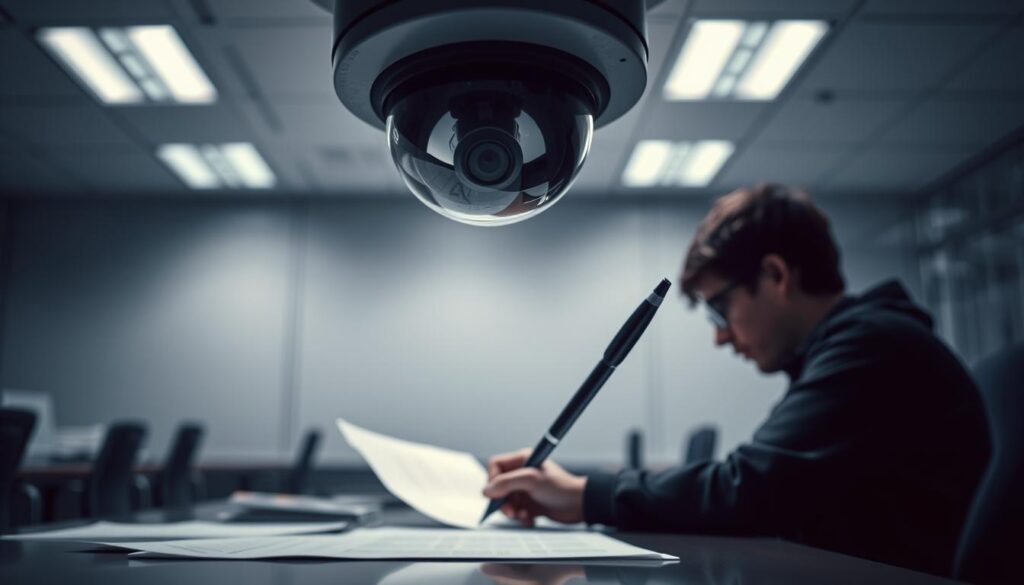
To maintain credibility, it’s crucial for claimants to be consistent in their reported limitations and actual activities. Inconsistencies can lead to challenges in court, potentially jeopardizing the claim.
Protecting Yourself During a Claim Investigation
During a claim investigation, being proactive can help you avoid potential pitfalls related to surveillance. Insurance companies often use surveillance to verify the legitimacy of claims, and being aware of this can help you protect your interests.
Following Medical Restrictions Carefully
It’s essential to adhere to the medical restrictions provided by your healthcare provider. This not only aids in your recovery but also demonstrates your commitment to following medical advice, which can be beneficial if your activities are being monitored by an investigator outside your home.
Managing Your Social Media Presence
Be cautious with your social media activity during a claim investigation. Avoid posting content that could be misinterpreted or used against you. Insurance companies may monitor social media as part of their surveillance activities.
Documenting Your Recovery Properly
Keep detailed records of your recovery, including pain journals, medication logs, and activity records. This documentation can provide valuable context if your activities are captured during surveillance.
| Documentation Type | Purpose |
|---|---|
| Pain Journals | Record daily pain levels and symptoms |
| Medication Logs | Track medication usage and dosage |
| Activity Records | Document daily activities and limitations |
Conclusion
As we finalize our look at when and why insurance companies conduct surveillance, it’s vital to emphasize the importance of being prepared. Insurance surveillance can be a stressful and invasive experience, but understanding its role in the claim process can help alleviate anxiety.
To protect your rights and ensure a smooth claim process, it’s essential to be aware of the tactics used by insurance companies. This includes being mindful of your social media presence, documenting your recovery properly, and following medical restrictions carefully. By taking these precautions, you can help safeguard your personal injury or disability benefits claim.
While insurance companies have the right to gather evidence, claimants also have the right to fair treatment and privacy. By understanding surveillance practices and working with experienced attorneys, you can navigate the process with confidence and ensure that your legitimate claim is not unfairly denied.
Ultimately, knowledge about surveillance practices helps level the playing field between individual claimants and insurance companies, empowering you to seek the compensation you deserve.
FAQ
What triggers an insurance company to conduct surveillance on a claimant?
Insurers may initiate surveillance if they suspect disability benefits fraud or if there are inconsistencies in the claimant’s statements or behavior, such as engaging in physical activities that contradict their reported injuries.
Can insurance companies monitor my social media accounts during a claim investigation?
Yes, insurers may monitor social media to gather evidence about a claimant’s daily activities, which can be used to verify or contradict their claim. I should be cautious about what I post online.
How can surveillance impact my personal injury claim?
Surveillance evidence can significantly affect my claim, especially if it’s taken out of context. For instance, a video showing me engaging in an activity that contradicts my reported pain or injuries can harm my credibility.
What can I do to protect myself during a claim investigation?
To minimize potential issues, I should carefully follow my medical restrictions, be mindful of my online presence, and thoroughly document my recovery process, including any challenges or setbacks.
Are insurance companies allowed to conduct surveillance outside my home?
Yes, insurers can conduct physical surveillance outside my home, which may include video and photographic evidence of my daily activities. I should be aware that my actions in public can be observed.
How can I manage my social media presence during a claim?
I should limit my online activity, avoid posting about my injuries or claim, and adjust my privacy settings to restrict who can see my posts. This can help prevent insurers from using my online activity against me.
Can an insurance company use surveillance evidence in court?
Yes, if an insurer has gathered evidence through surveillance, they may use it in court to challenge my credibility or the legitimacy of my claim. I should be prepared for the possibility that such evidence may be presented.

